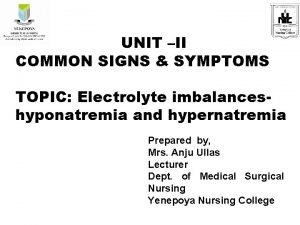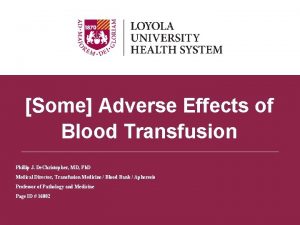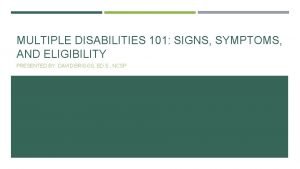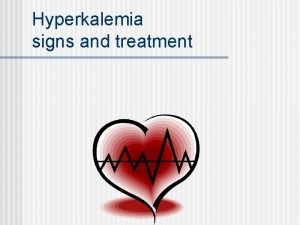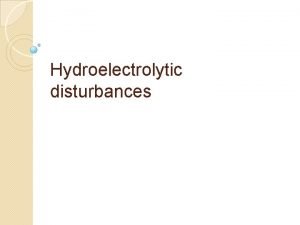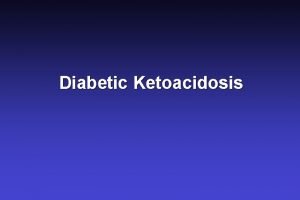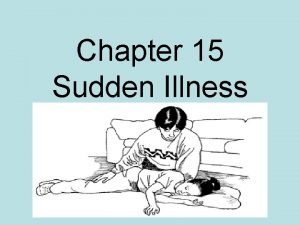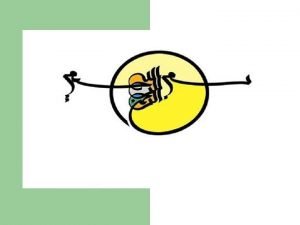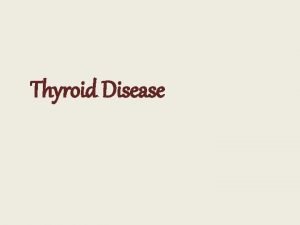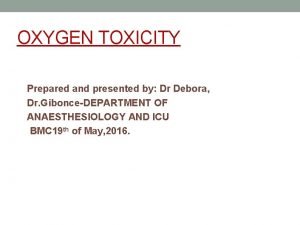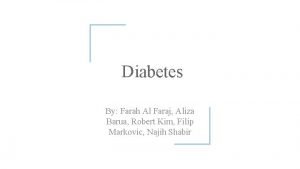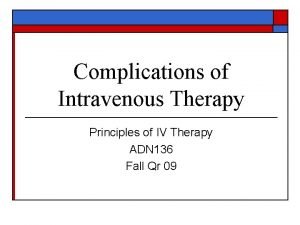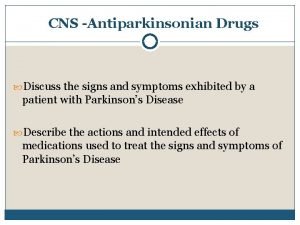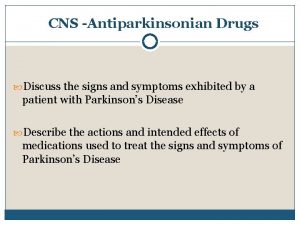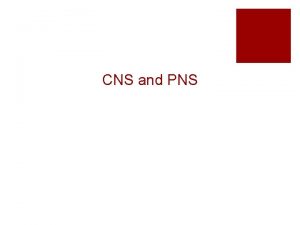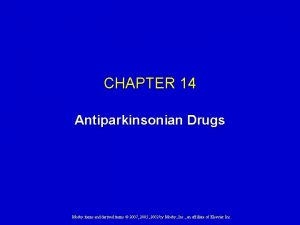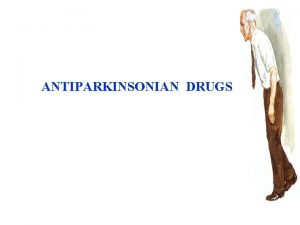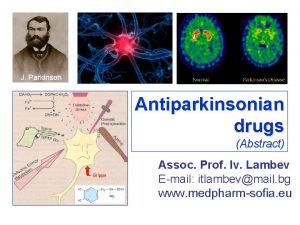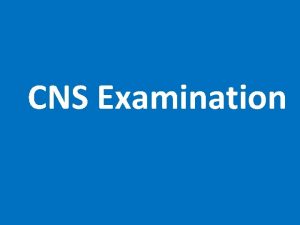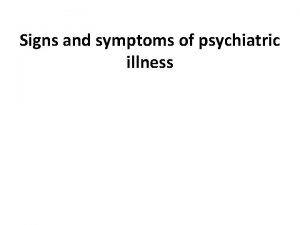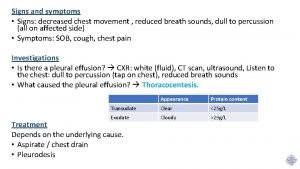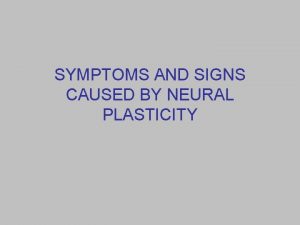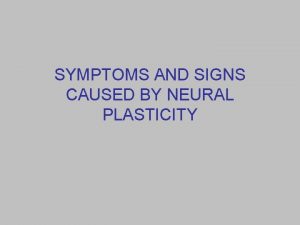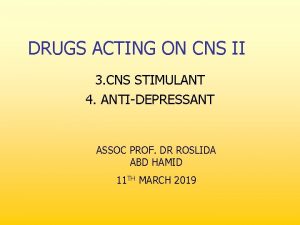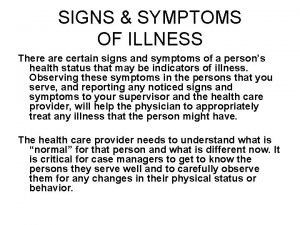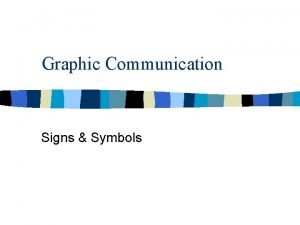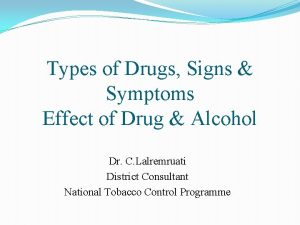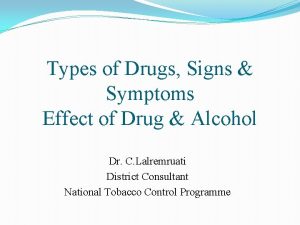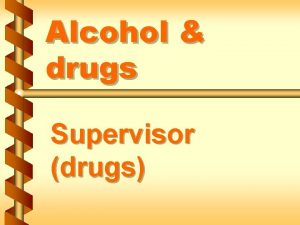CNS Antiparkinsonian Drugs Discuss the signs and symptoms


























- Slides: 26

CNS -Antiparkinsonian Drugs Discuss the signs and symptoms exhibited by a patient with Parkinson’s Disease Describe the actions and intended effects of medications used to treat the signs and symptoms of Parkinson’s Disease

CNS Antiparkinsonian Drugs Parkinson’s Disease: Disease of the basal ganglia & related neuronal groups + neurotransmitter deficiencies “shaking palsy” Bradykinesia – slowing down in the initiation & execution of movement Rigidity – increased muscle tone Tremor at rest Impaired postural reflexes


CNS Antiparkinsonian Drugs Degeneration of dopamine-producing neurons in the substantia nigra of the midbrain Disrupts the balance of: dopamine (DA) – neurotransmitter for normal functioning of the extrapyramidal motor system (control of posture, support, and voluntary motion) Acetylcholine (Ach) and the basal ganglia Symptoms do not occur until 80% of the neurons in the substantia nigra are lost

CNS Antiparkinsonian Drugs

CNS Antiparkinsonian Drugs Five Stages Flexion of affected arm - tremor / leaning toward unaffected side Slow shuffling gate Increased difficulty walking – looks for support to prevent falls Further progression of weakness – assistance with ambulation Profound disability – may be confined to wheelchair

CNS Antiparkinsonian Drugs Tremor First sign Affects handwriting – trailing off at ends of words More prominent at rest Aggravated by emotional stress or increased concentration “Pill rolling” – rotary motion of thumb and forefinger NOT essential tremor – intentional

CNS Antiparkinsonian Drugs Rigidity Increased resistance to passive motion when limbs are moved through their range of motion “Cogwheel rigidity” -- Jerky quality – intermittent catches of movement Caused by sustained muscle contraction Muscle soreness; feeling tired & achy Slowness of movement due to inhibition of alternating muscle group contraction & relaxation in opposing muscle groups

CNS Antiparkinsonian Drugs Bradykinesia Loss of automatic movements: Blinking of eyes, swinging of arms while walking, swallowing of saliva, self-expression with facial and hand movements, lack of spontaneous activity, lack of postural adjustment Results in: stooped posture, masked face, drooling of saliva, shuffling gait (festination); difficulty initiating movement


CNS Antiparkinsonian Drugs Drug Therapy Correcting the imbalance of neurotransmitters within the CNS Dopaminergic – enhance release or supply of dopamine (DA) Anticholinergic – antagonize or block the effects of overactive cholinergic neurons in the striatum Monoamine Oxidase Inhibitor Decreases MAO (the degradative enzyme for DA) Results: DA levels are increased Catechol-O-Methyl Transferase (COMT) Inhibitor Betablocker Antihistamine

CNS Antiparkinsonian Drugs

CNS Antiparkinsonian Drugs

CNS Antiparkinsonian Drugs

CNS Antiparkinsonian Drugs

CNS Antiparkinsonian Drugs Anticholinergic Drugs: decrease the activity of ACh Artane, Pagitane, Cogentin Antihistamines – decreases rigidity Benadryl Betablockers – decreases rigidity Inderal Monoamine oxidase inhibitor (MAO): Eldepryl, Carbex Catechol-O-Methyl Transferase (COMT) Inhibitor Comtan, Tasmar

CNS Antiparkinsonian Drugs Drug Therapy Sinemet early in disease becomes ineffective Early: DA receptor agonist -- directly stimulate DA receptors Parlodel, Permax, Requip, Mirapex Moderate to severe symptoms: Sinemet is added to therapy


CNS Antiparkinsonian Drugs


CNS -- Antiparkinsonian Drugs Nursing Process Assessment Head-to-toe Neuro GI/GU Ability to swallow Psychological and emotional coping Parkinson progression Medication History Length of time on medications Changes in medications and effects Safety Ability to perform ADLs independently

CNS -- Antiparkinsonian Drugs Nursing Process Nursing Actions Exact timing of medication – cannot be administered late Oral doses given with food Avoid foods in Vit B 6 – reverse effects of levodopa Force fluids >2, 000 m. L/day High roughage, high fiber diet

CNS -- Antiparkinsonian Drugs Patient Education “Wearing off” phenomenon – gradual worsening of symptoms as medication begins to lose effectiveness, despite maximal doses “Drug Holiday” when levodopa no longer working effectively (usually 10 -day period of hospitalization) Community resources to assist patient and family Safety Effect on blood pressure – Hypotension Hypertensive crisis of MAOI accidentally taken “Sleep attacks” – newer dopamine agonists (pramipexole & ropinirole) GI: Constipation – high fiber, high roughage, increased fluids GU: urine color changes – brownish-orange (entacapone)

CNS – Antiparkinsonian Drugs Monitoring Therapeutic Effects Therapeutic Response: Improved sense of well being Ability to perform ADLs Ability to concentrate and think clearly Less intense parkinsonian manifestations Observe for Adverse Effects: Confusion, anxiety, irritability, depression, paranoia, headache, weakness, lethargy, nausea, vomiting, anorexia, palpitations, postural hypotension, tachycardia, dry mouth, constipation, urinary retention, blurred vision, dark urine, difficulty swallowing, and nightmares

CNS – Antiparkinsonian Drugs Carbidopa in Parkinson’s disease is to be used: a. As successful monotherapy. b. In conjunction with levodopa to block peripheral conversion to dopamine. c. To decrease the incidence of gastrointestinal side effects associated with levodopa. d. 2 and 3

CNS – Antiparksonian Drugs Discuss the normal course of progression of Parkinson’s disease. Include the rationale for drug therapy to alleviate the symptoms.
 All the signs for driving
All the signs for driving What is tender breast in pregnancy
What is tender breast in pregnancy Hyperkalemia symptoms and signs
Hyperkalemia symptoms and signs Icaada
Icaada Trali symptoms
Trali symptoms Symptoms of shock
Symptoms of shock Victoria climbe
Victoria climbe Neuroblastoma symptoms
Neuroblastoma symptoms Signs and symptoms of multiple disabilities
Signs and symptoms of multiple disabilities Hypocalcemia signs and symptoms
Hypocalcemia signs and symptoms Hypocalcemia signs and symptoms
Hypocalcemia signs and symptoms Kaexalate
Kaexalate Hydroelectrolytic
Hydroelectrolytic Signs of hemolysis
Signs of hemolysis Dka in pregnancy
Dka in pregnancy What is a common signal of sudden illness
What is a common signal of sudden illness Portal hypertension symptoms
Portal hypertension symptoms Hyperkalemia and muscle weakness
Hyperkalemia and muscle weakness Signs and symptoms of trali
Signs and symptoms of trali Management of hyperthyroidism
Management of hyperthyroidism Ecf volume deficit
Ecf volume deficit Oxygen poisoning
Oxygen poisoning Signs and symptoms of hyperglycemia
Signs and symptoms of hyperglycemia Iv infiltration complications
Iv infiltration complications Meningitis causes
Meningitis causes Icp
Icp Pathophysiology signs and symptoms
Pathophysiology signs and symptoms


